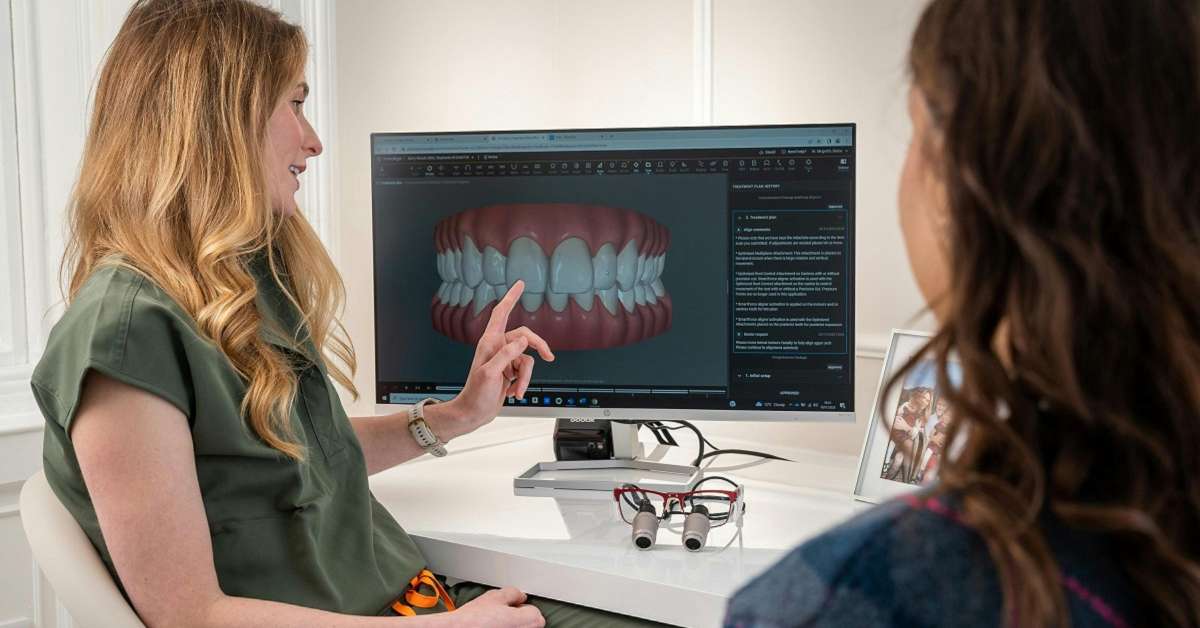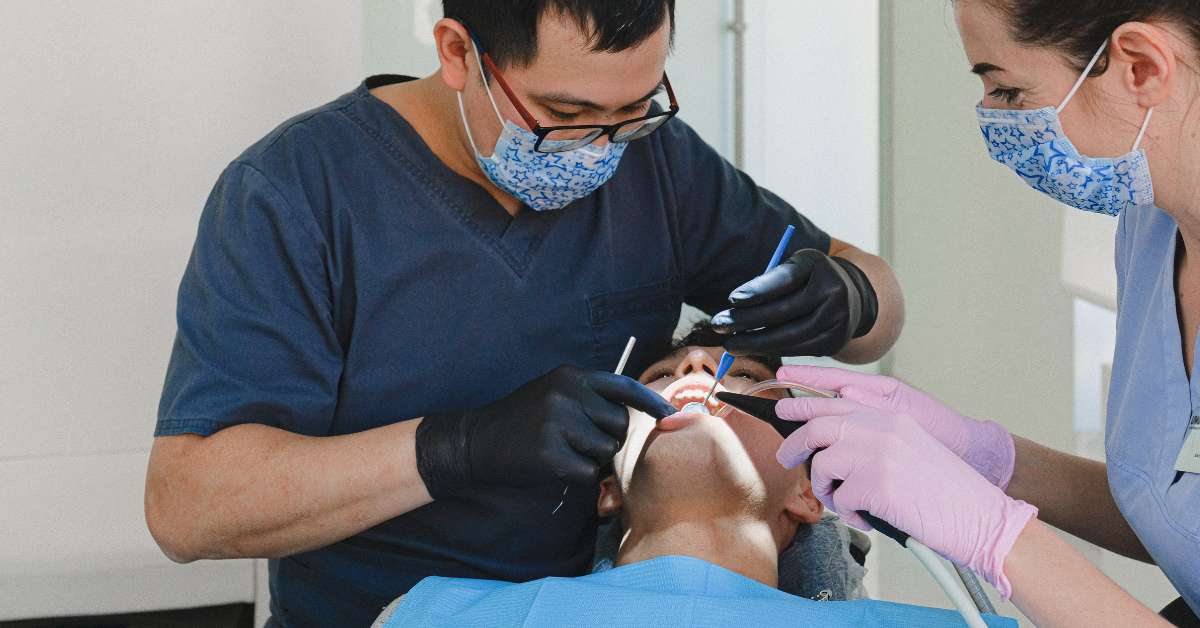Are you noticing your old dental work turning yellow? Maybe it’s your front crowns that used to match perfectly, or veneers that don’t blend like they once did.
It happens slowly, then suddenly, it’s all you can see in the mirror. Even if you brush twice a day and skip the coffee, those subtle color changes start to become noticeable.
It’s not just about looks. Yellowing can indicate changes in the materials or even in the tooth itself.
The fix isn’t always complicated, but it does depend on what’s actually causing the issue. Once you know why it’s happening, you can get back to a smile that feels like yours again.
Key Takeaways
- Yellowing in crowns, veneers, or fillings often comes from faded glaze, stained resin, or darkened teeth underneath.
- Simple fixes like polishing, reglazing, or internal whitening can restore brightness without full replacement.
- Replacing old composites and maintaining regular cleanings helps keep your smile natural and stain-free.
- Modern materials like zirconia and lithium disilicate stay brighter and resist discoloration longer.
Why Does Old Dental Work Turn Yellow?
Even the best dental work can lose its brightness over time. Different materials react in their own ways, and sometimes the tooth underneath plays a role, too.
Here are the most common reasons it happens and what each one means.
1. The surface glaze faded
Porcelain and zirconia remain bright due to their smooth glaze. When scratched by abrasive toothpaste or rough cleaning, stains start to adhere.
2. Composite fillings aged
Resin absorbs pigments from coffee, tea, and wine. After a few years, it loses its shine and appears dull in comparison to newer work.
3. The tooth darkened inside
Root canal teeth or past injuries can darken from within. Since crowns and veneers are translucent, that shade shows through.
4. Gums pulled back
When gums recede, the edge of the restoration shows, exposing darker cement or metal near the gumline.
5. Normal wear
Over time, even polished surfaces pick up tiny scratches that trap color. Regular professional care can slow down the process, but some yellowing is inevitable.
Solutions by Type of Restoration
Fixing old dental work that has turned yellow depends on what’s behind the color change. Some cases are quick to handle, while others require a full review.
1. Polishing or reglazing
If the surface is dull but intact, your dentist can polish or reapply glaze to porcelain or zirconia. It smooths the texture and restores shine without requiring a full restoration.
2. Replacing old composite
Stained fillings or bonding can’t be whitened. The fix is simple, and they will remove the old resin and replace it with a new one that matches your current tooth color.
3. Treating darkened teeth
When discoloration originates from within, such as after a root canal, internal bleaching can lighten the tooth before placing a veneer or crown. It keeps the result natural, rather than overly opaque.
4. Full restoration replacement
If the material is too worn or the color mismatch is severe, replacing the veneer or crown is usually the best option. Newer materials, such as high-translucency zirconia or lithium disilicate, resist staining and remain brighter for years.
5. Professional maintenance
Regular cleanings with a skilled hygienist protect the glaze and prevent buildup that dulls the surface.
If you’re ready to fix the yellowing and get your smile back to how it looked before, you can find the best cosmetic dentistry in Jacksonville Florida, to do the work right.
When Veneers Make the Most Sense
Sometimes the best fix for yellowed or mismatched dental work is a new start.
According to the National Library of Medicine, veneers can cover deep stains, old bonding, or dark root-canal teeth without needing to replace the entire tooth structure.
Porcelain veneers are ideal for healthy teeth that are discolored on the surface. Before they’re placed, your dentist may lighten the tooth with internal bleaching to achieve a natural-looking final color, rather than a flat or opaque appearance.
Once the surface is ready, the veneer bonds directly to the enamel, keeping most of your original tooth intact.
Modern materials, such as lithium disilicate and ultra-translucent zirconia, blend light in a way that mimics natural enamel.
They hold their shade for years and don’t absorb stains the way older materials do.
How to Keep Restorations Bright
Once your dental work looks new again, maintaining its appearance is largely about adopting small habits that protect the surface and preserve its color.
- Brush gently, not aggressively. Use a soft toothbrush and non-abrasive toothpaste. Hard brushing can scratch porcelain and resin, causing them to stain more quickly.
- Skip harsh whitening kits. Over-the-counter whiteners don’t work on restorations and can irritate your gums or roughen the edges of veneers.
- Rinse after dark foods and drinks. Coffee, tea, berries, and red wine are common culprits. A quick rinse with water helps prevent new stains from settling in.
- Avoid abrasive cleanings. If your hygienist uses air polishers or gritty pastes, mention that you have veneers or crowns. The wrong tools can wear down the glaze.
- Stick to regular dental visits. Professional polishing restores smoothness, detects early wear, and helps maintain the glaze’s integrity for longer.
Small changes like these make a big difference. Dental work that’s cared for properly can stay bright for many years before you ever need to think about replacing it.
Bring Back Your Smile!
You don’t have to live with dull or yellowed dental work. Most of the time, the fix is quick once the cause is clear. A polish, a reglaze, or a new veneer can bring back your smile without much hassle.
Find the best care for your smile at Digital Aesthetic Dentistry. You’ll get clear answers, honest options, and results that look natural.
Book your appointment now and let your smile shine again.
FAQs
How can I keep my crowns or veneers from turning yellow again?
Brush gently with a soft toothbrush and non-abrasive toothpaste. Rinse after drinking coffee, tea, or wine, and receive regular cleanings from a hygienist who knows how to properly treat ceramic surfaces.
Do I really need professional polishing?
Yes. Polishing helps restore the smooth glaze that keeps stains from sticking. Skipping it allows yellowing to return more quickly.
When should I see my dentist?
If the color no longer matches your natural teeth, a yellow line appears near your gums, or the surface feels rough or looks dull, it’s time for a checkup.




